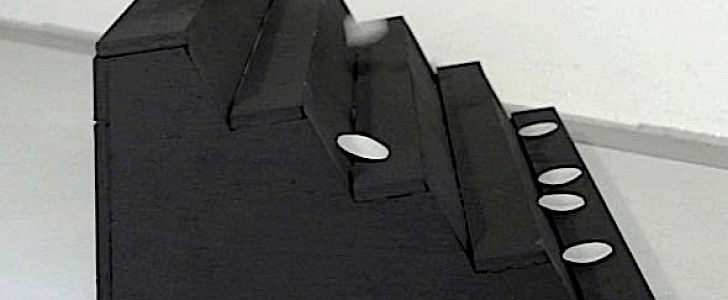The Venus flytrap is that North American carnivorous plant that likes to feed on the insects and arachnids it catches by itself. It does this by snapping shut once it detects a meal landed on it, and it is the best analogy researchers found with a breakthrough they recently made using money from the U.S. Army.
At the beginning of February, a team from the University of Massachusetts Amherst published in the peer-reviewed Nature Materials journal a paper called “Autonomous snapping and jumping polymer gels.” In essence, it’s all about self-propelling, shape-shitting materials that could be used in the future in a variety of applications, including military robots.
The research was funded by the U.S. Army as a means to create materials that can move along on their own accord, without the need for engines or motors. And the only way they can do that is shape-shift to generate motion.
More to the point, scientists began by watching how, when losing internal fluid to evaporation, elastic gel strips move on their own, generally very slowly, but once in a while with a snapping motion just like that of the Venus flytrap.
The team looked into how this process can be manipulated by changing the shape of the material, and found that these elastic gel can be made to shrink, and snap time and time again, allowing them to move.
The research is only beginning, and it is part of a larger effort funded by the Army Research Office, but it could ultimately lead to the creation of materials that use their own energy flow and the environment to move. These materials can be then used to create robots and such that will need no other power source than the one they generate themselves.
“[…] Most of these snapping devices need a motor or a human hand to keep moving. With this discovery, there could be various applications that won’t require batteries or motors to fuel movement,” said in a statement Amherst College of Natural Sciences professor Al Crosby.
“These lessons demonstrate how materials can generate powerful movement by harnessing interactions with their environment, such as through evaporation, and they are important for designing new robots, especially at small sizes where it’s difficult to have motors, batteries, or other energy sources.”
The research was funded by the U.S. Army as a means to create materials that can move along on their own accord, without the need for engines or motors. And the only way they can do that is shape-shift to generate motion.
More to the point, scientists began by watching how, when losing internal fluid to evaporation, elastic gel strips move on their own, generally very slowly, but once in a while with a snapping motion just like that of the Venus flytrap.
The team looked into how this process can be manipulated by changing the shape of the material, and found that these elastic gel can be made to shrink, and snap time and time again, allowing them to move.
The research is only beginning, and it is part of a larger effort funded by the Army Research Office, but it could ultimately lead to the creation of materials that use their own energy flow and the environment to move. These materials can be then used to create robots and such that will need no other power source than the one they generate themselves.
“[…] Most of these snapping devices need a motor or a human hand to keep moving. With this discovery, there could be various applications that won’t require batteries or motors to fuel movement,” said in a statement Amherst College of Natural Sciences professor Al Crosby.
“These lessons demonstrate how materials can generate powerful movement by harnessing interactions with their environment, such as through evaporation, and they are important for designing new robots, especially at small sizes where it’s difficult to have motors, batteries, or other energy sources.”

